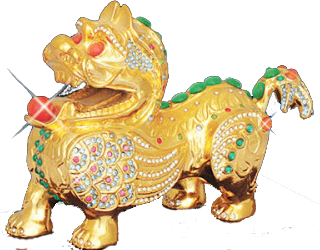Condition Treated / Pain Conditions
Lateral Humeral Epicondylitis (Tennis Elbow)
Lateral humeral epicondylitis
Lateral humeral epicondylitis also named tennis elbow or elbow strain falls into the category of "injury of the muscle and tendon". It usually has a slow onset with repeated attacks without trauma, and is frequently seen in people who have to rotate their forearms and stretch their elbows in order to work, such as woodworkers, locksmiths, plumbers, electricians, mineworkers as well as tennis players. Lateral humeral epicondylitis (Elbow strain) is commonly known as external humeral epicondylitis, internal humeral epicondylitis and inflammation of the olecranon.
Causes and Pathogenesis of the Lateral humeral epicondylitis
It is mainly caused by chronic injury and overuse of the elbow joint that result in impairment of
the qi and blood, and the blood fails in nourishing the muscles and tendons. However, the external
wind and cold invade the body by taking advantage of the situation, and as a result, the muscle
region of the hand three yang channels gets injured and elbow strain occurs.
Identification of Patterns
Chief symptoms pain upon elbow movement, with pain occasionally radiating into the forearm,
wrist and upper arm. Local swelling is not obvious but there is an obvious fixed tender point.
In the pattern of the muscle region of hand-yangming, an obvious tender point is located on the
lateral and superior side of the elbow joint (around the external humeral epicondyle). In the
pattern of the muscle region ofhand-taiyang, an obvious tender point is located on the medial and
inferior side of the elbow joint (around the internal humeral epicondyle). In the pattern of the
muscle region of hand-shaoyang, an obvious tender point is located on the lateral side of elbow
joint (on the olecranon).
Treatment
Therapeutic principles: Activating the blood and resolving stasis, soothing tendons and unblocking collaterals.
(1) Primary treatment with acupuncture
Principal points Ashi-point
Supplementary points Add Quchi (LI 11), Shousanli (LI 10) and Hegu (LI 4) to the pattern of the
muscle region of hand-yangming. Add Yanggu (SI 5) and Xiaohai (SI
8) to the pattern of the muscle region ofhand-taiyang. Add Waiguan (TE 5) and Tianjing
(TE 10) to the pattern of the muscle region of hand-shaoyang.
Explanation An Ashi-point has the effect of dredging the flow of qi and blood in the local
channels, relaxing muscles and tendons, dredging the flow of qi and blood in the collaterals and
stopping pain.
(2) Alternate methods of treatment
Bloodletting and cupping Select an Ashi-point and tap it with a skin needle until it is
bleeding, followed by cupping once every 2 to 3 days.
Ginger-isolated moxibustion Select an Ashi-point, Quchi (LI 11), Zhouliao (LI
12), Shousanli (LI 10) and Waiguan (TE 5). Put fresh ginger slices on the above points, and add
moxa cones for ginger moxibustion. Use three to five cones per point once daily or every other day;
ten treatments constitute a full course.
(3) Manipulations
Remarks
Acupuncture and moxibustion work well for Carpal Tunnel Syndrome (Elbow strain). During treatment, the elbow should be kept
warm to avoid the invasion of external wind, cold and dampness and avoid rotation of the forearm and stretching backwards
the wrist.
Pain Care Acupuncture Clinic is your local acupuncture office in Torrance, CA . specializing in treating injuries and chronic pain. Dr. Ming Chen and Dr. Lu Yang, Both acupuncturists who also the oriental medical doctor ( O.M.D. ) can pinpoint the cause of the injury and suggest the best treatment methods for you. You need our doctor to listen to the whole story and examine you, so that you can get started treating on your injuries or chronic pain and get you on the track toward recovery.
Call now for a free health consultation !
Visit out Pain Care Acupuncture Clinic in;
21320 Howthorne Blvd., Suite 203 Torrance, CA 90503
quick link
Condition Treated
- Pain Conditions
- Respiratory System Conditions
- Digestive System Conditions
- Circulatory System Conditions
- Blood System Conditions
- Endocrine System Conditions
- Nervous System Conditions
- Urogenital System Conditions
- Gynecological Conditions
- Tumour Conditions
- Emotional/Behaviour Conditions
- Sensor Organ Conditions
- Skin Conditions
- Other Conditions
 La acupuncture
La acupuncture













